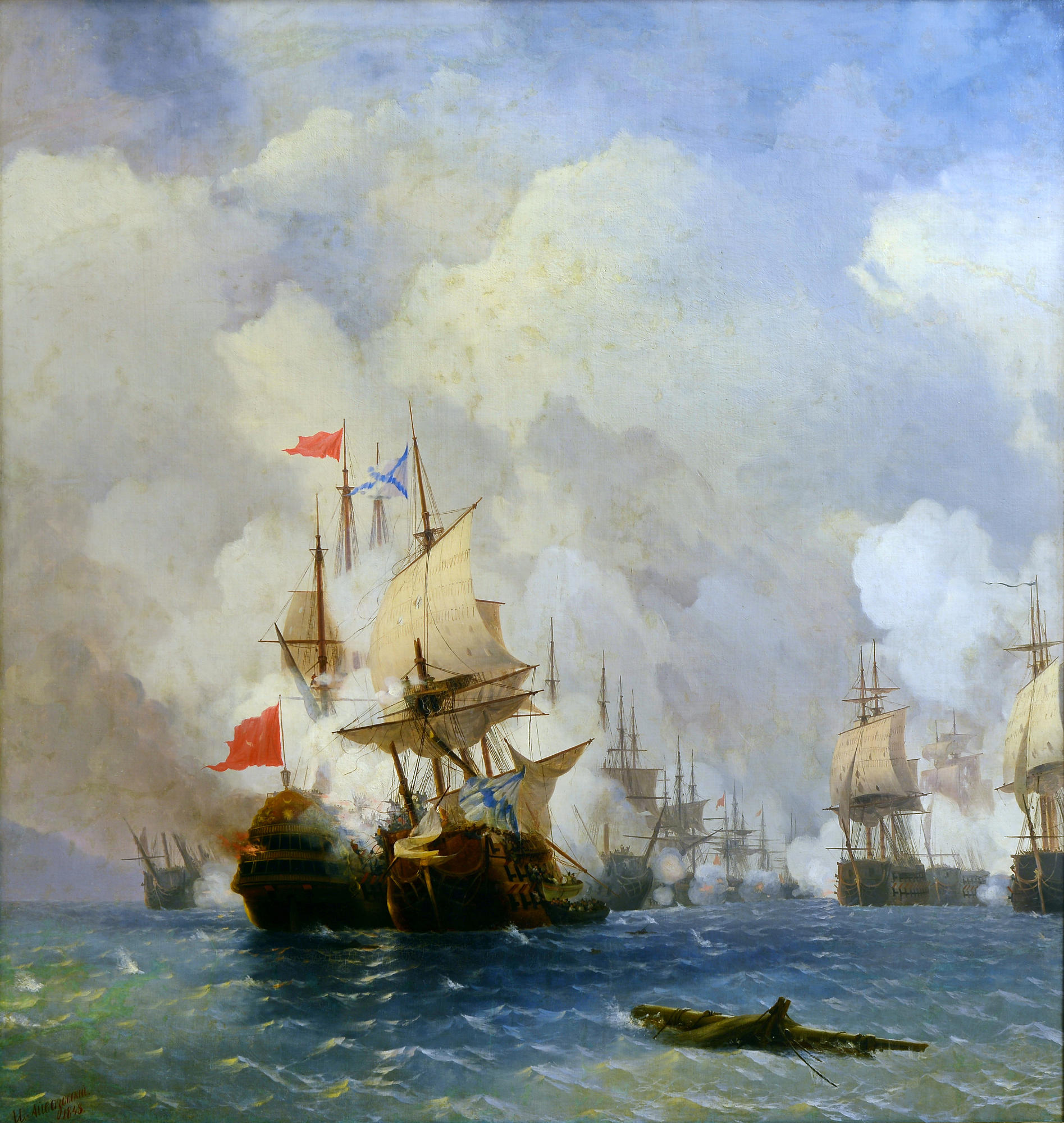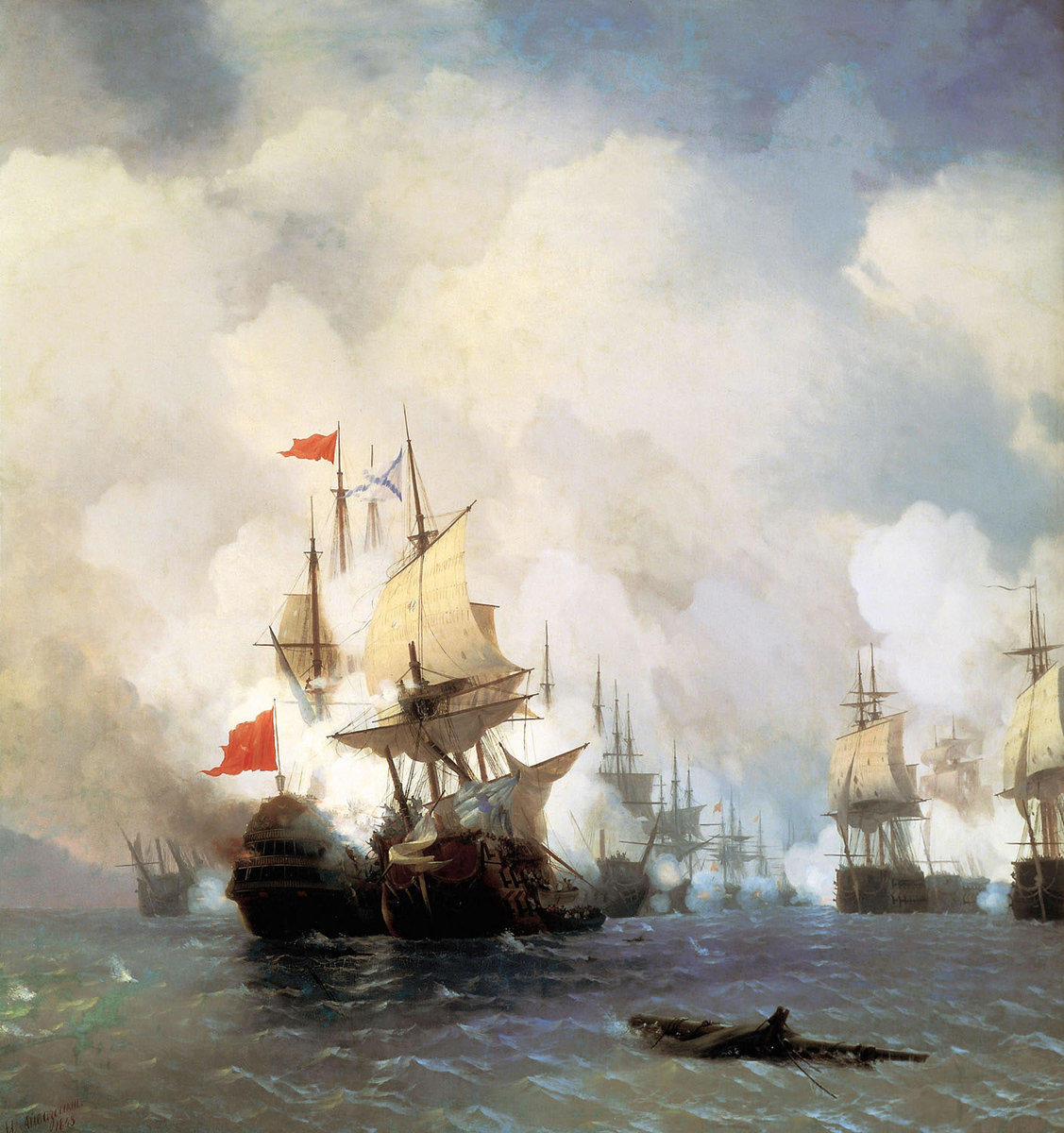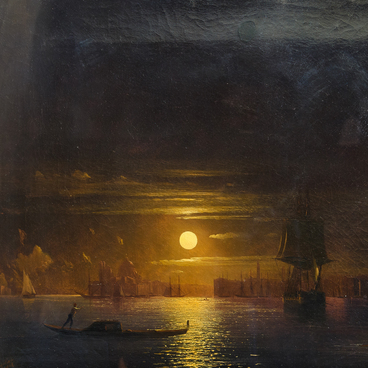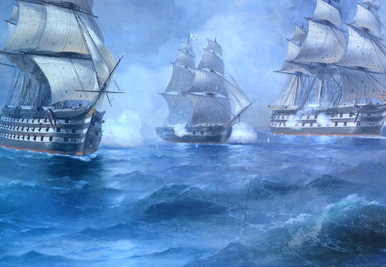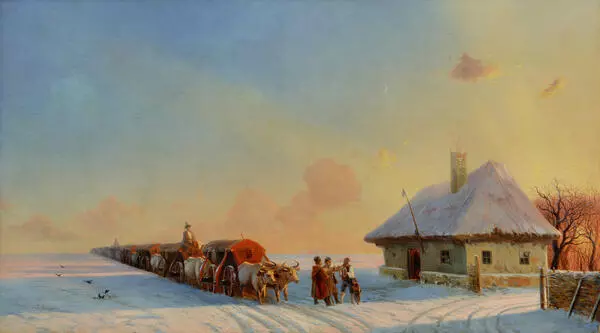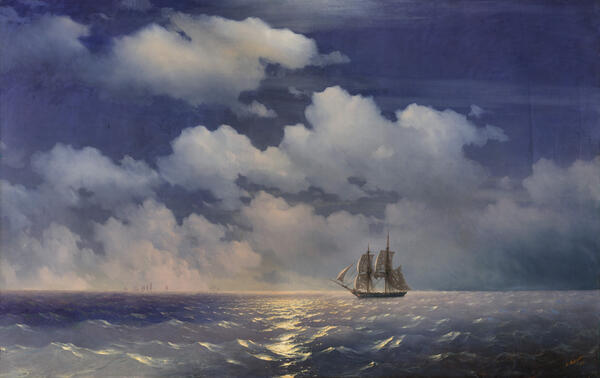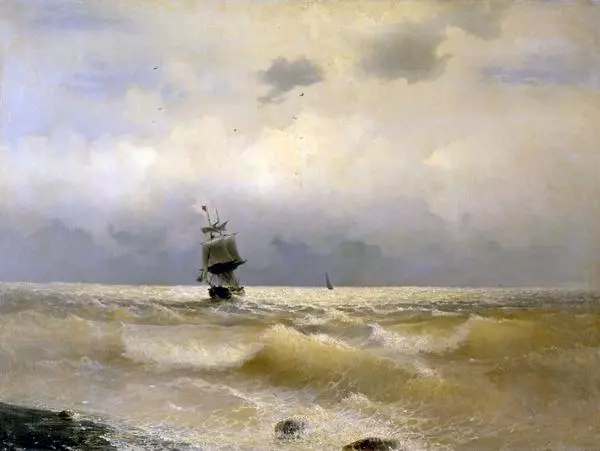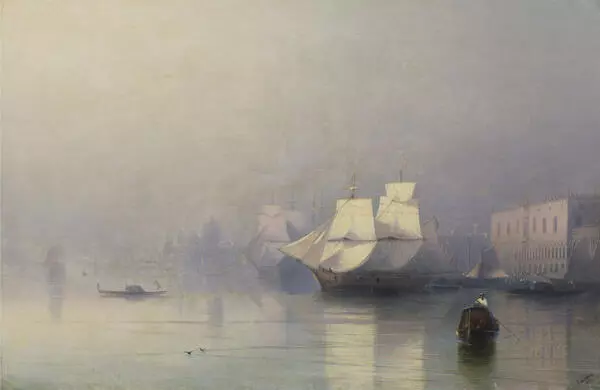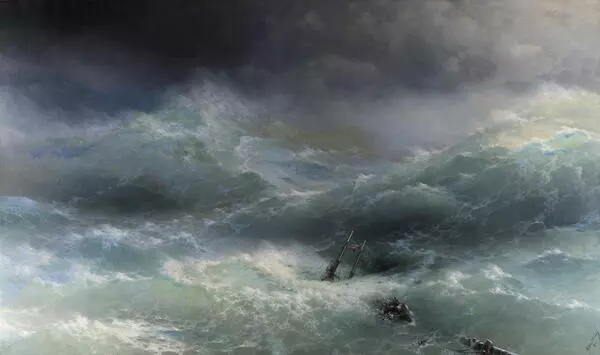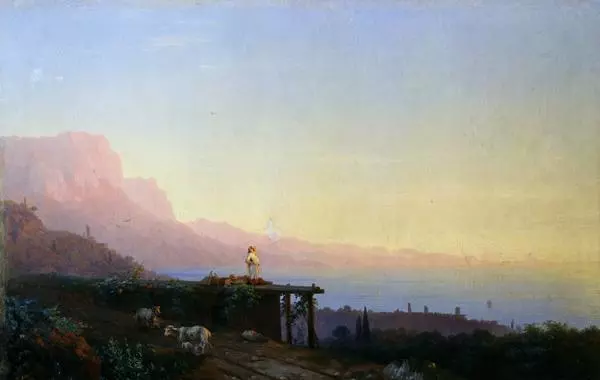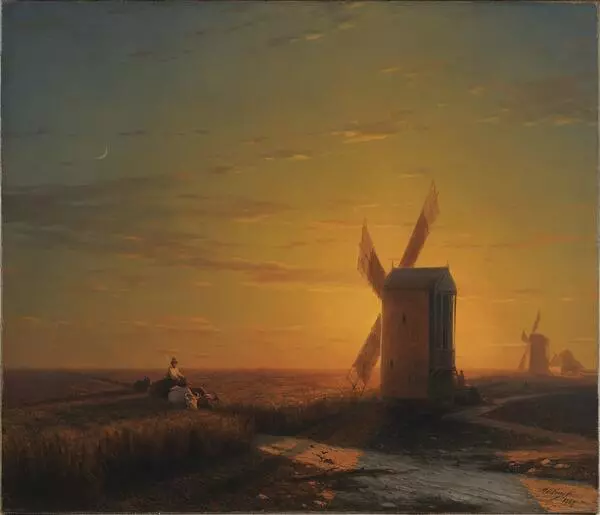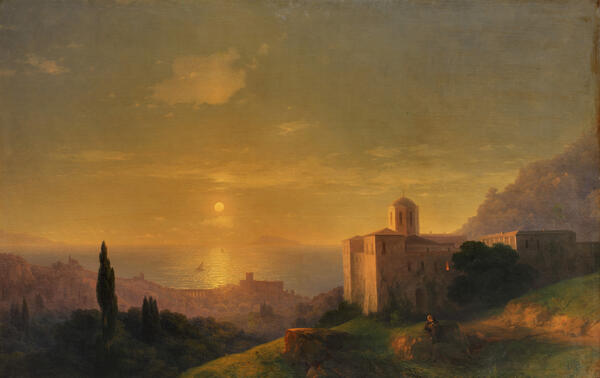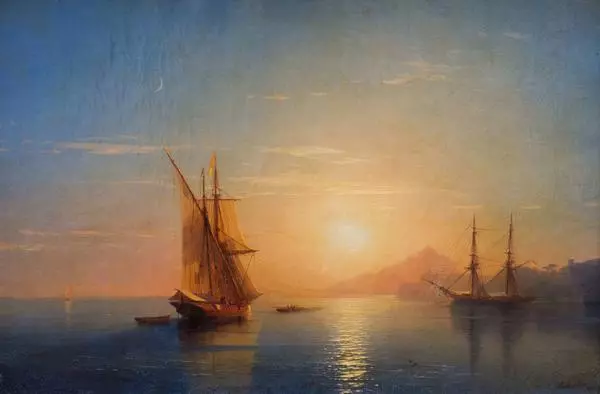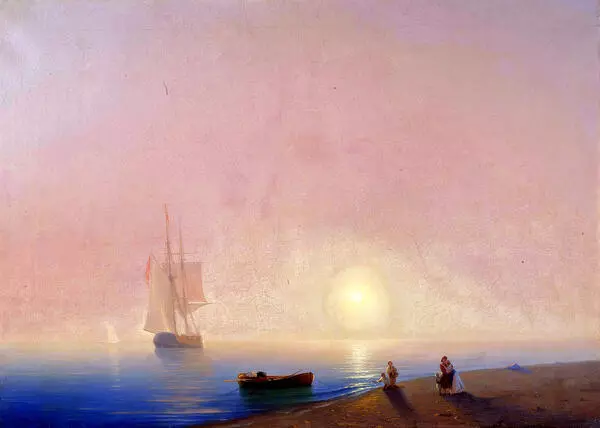From his very young years, Ivan Aivazovsky was interested in battle painting. The pieces created by him are a real chronicle of Russian naval forces and seamen, the heroic deeds of which the artist glorified all his life. He depicted nearly all meaningful events of Russian history — starting from the achievements of the epoch of Peter I and up to the sea battles, which took place during the artist’s life. Not only his fellow-artists, but also the ship commanders noted the talent of Aivazovsky as the battle painter.
The paintings by Aivazovsky tell about the life in the navy both in о жизни флота в мирной время и во дни войны. Usually, his depictions of battles are of solemn character — he was very good at showing the pathos of the victories of Russian fleet. When he was working on the battle scenes, Aivazovsky was very attentive to the details of the venue, the structure of the battleships and weapons. He adopted this strive for the accuracy and specificity of the image from his mentor Maxim Vorobyov, who raised an entire generation of Russian artists.
In 1848, Aivazovsky created two matching paintings — Battle of Cesme and Battle in Chian Strait. They both reflect very important episodes of the lengthy conflict between Russia and Turkey in the 18th and 19th centuries. These episodes took place in 1770, when the Baltic Navy ships entered Cesme Bay and defeated Turkish fleet. This was one of the first outstanding victories of Russian Navy, and Aivazovsky reflected it fully. On the foreground we can see a huge battle ship all covered with smoke like a huge fire, and a small rowboat heading to it. This is Saint Eustatius — the flagship of Russian Navy. The Turkish ships are in the background hidden in the smoke.
Aivazovsky often passed his battle scenes to the Naval School, so that the young students could keep the memory of the heroic deeds of their ancestors and did not disgrace the honour of their country. However, the artist not only by the victories Russian Navy fascinated the artist. Starting from his very young years, he was interested in the struggle of various nations for their independence. Aivazovsky dedicated numerous paintings to this topic reflecting the revolt in Italy led by Garibaldi, the struggle of Greeks against their oppressors and other bright pages of the world history.
The paintings by Aivazovsky tell about the life in the navy both in о жизни флота в мирной время и во дни войны. Usually, his depictions of battles are of solemn character — he was very good at showing the pathos of the victories of Russian fleet. When he was working on the battle scenes, Aivazovsky was very attentive to the details of the venue, the structure of the battleships and weapons. He adopted this strive for the accuracy and specificity of the image from his mentor Maxim Vorobyov, who raised an entire generation of Russian artists.
In 1848, Aivazovsky created two matching paintings — Battle of Cesme and Battle in Chian Strait. They both reflect very important episodes of the lengthy conflict between Russia and Turkey in the 18th and 19th centuries. These episodes took place in 1770, when the Baltic Navy ships entered Cesme Bay and defeated Turkish fleet. This was one of the first outstanding victories of Russian Navy, and Aivazovsky reflected it fully. On the foreground we can see a huge battle ship all covered with smoke like a huge fire, and a small rowboat heading to it. This is Saint Eustatius — the flagship of Russian Navy. The Turkish ships are in the background hidden in the smoke.
Aivazovsky often passed his battle scenes to the Naval School, so that the young students could keep the memory of the heroic deeds of their ancestors and did not disgrace the honour of their country. However, the artist not only by the victories Russian Navy fascinated the artist. Starting from his very young years, he was interested in the struggle of various nations for their independence. Aivazovsky dedicated numerous paintings to this topic reflecting the revolt in Italy led by Garibaldi, the struggle of Greeks against their oppressors and other bright pages of the world history.
